24 Wild Animals in Peru [Wildlife in Peru]
Want to know more about the wildlife in Peru?
Discover 24 wild animals in Peru in this post, as well as interesting facts about them. 🇵🇪
TABLE OF CONTENTS [show]
Learn All About Peruvian Animals
Ready to learn all about Peruvian animals?
I’ve always been fascinated by animals, and by how they can be so different from one country to another. In this guide, we’ll focus on the many animals Peru has on the land, in the sky, and underwater.
I’ve split the guide into 4 categories:
- Native animals from Peru
- Endangered animals of Peru
- What is Peru national animal?
- How many animals native to Peru?
Let’s dive in right away with our first category!
Native Animals from Peru
Peru is a large South American country located in the northwestern part of the continent, next to the Pacific Ocean. It is the third-largest country in South America, was home to several ancient cultures, and used to be a Spanish colony. It is bordered by Brazil, Ecuador, Colombia, Chile, and Bolivia, and its capital and largest city is Lima, which counts more than 9,751,000 inhabitants (but more than 10,882,000 if you include the metropolitan area).
An interesting part of the country that I wanted to tackle is its wildlife. In light of that, I have listed the best of it, and I hope you will love learning what animals live in Peru.
Here’s the Peru animals list.
1. Vicuña

- Name: Vicuña
- Scientific name: Lama vicugna
- Conservation status:
The vicuña is definitely the most famous Peru animal, and you must have already heard of it, or at least its close relative, the llama. It lives in the high elevations of the Andes mountain range (between 3,200 and 4,800 m / 10,500 and 15,700 ft), and is most likely the living ancestor of the domesticated alpacas, raised for their coats.
This camelid is the national animal of Peru, and it is very shy and lives in large herds.
2. Andean cock-of-the-rock
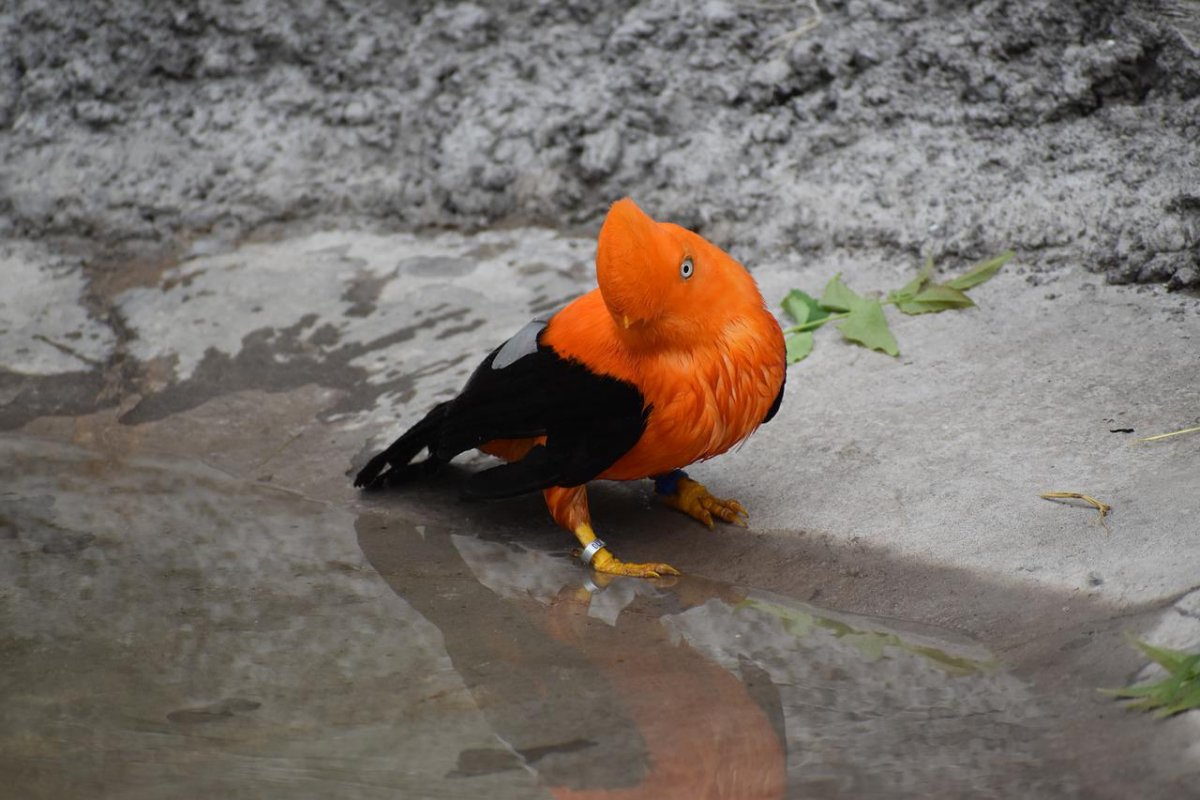
- Name: Andean cock-of-the-rock
- Scientific name: Rupicola peruvianus
- Conservation status:
The Andean cock-of-the-rock, also known as the tunki in Quechua, is the national bird of Peru. It is a large passerine bird, and is sexually dimorphic: while females are entirely brown, males have a large crest on top of their head and are black, gray and strikingly orange.
This bird’s range is made of thin strips running from Bolivia to Venezuela, and although it suffers from habitat destruction, it is not considered threatened for now.
3. Darwin’s rhea
- Name: Darwin’s rhea
- Scientific name: Rhea pennata
- Conservation status:
Darwin’s rhea, also known as the lesser rhea, is a large species of flightless bird native to South America, more precisely in its southern half, in Altiplano and Patagonia.
This bird is primarily a herbivore, and it feeds on cacti, grasses, and saltbush. It can be found in the open scrub in the grasslands of Peru, usually at elevations lower than 1,500 m / 4,900 ft.
4. Andean condor
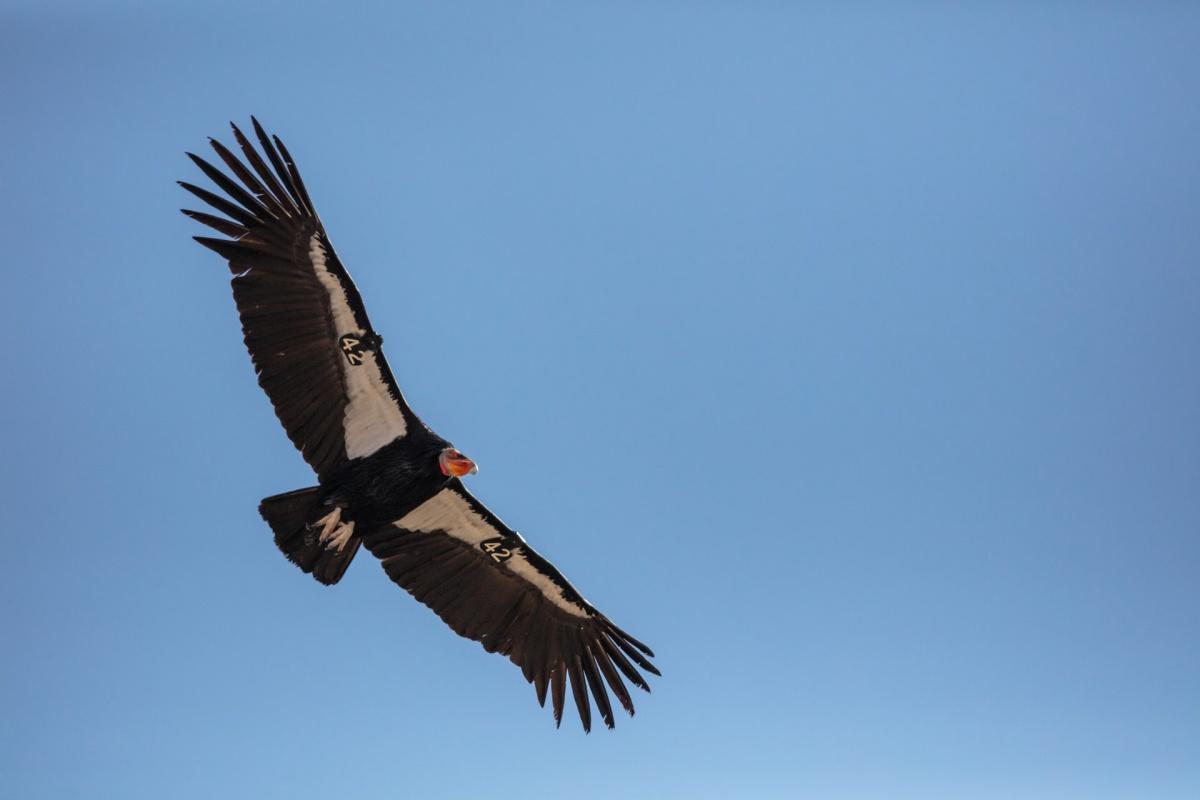
- Name: Andean condor
- Scientific name: Vultur gryphus
- Conservation status:
The Andean condor is one of the most iconic and impressive animals from the Andes mountain range. It is the largest flying bird in the world both by weight and by wingspan, reaching respectively up to 15 kg / 33 lb and 3.3 m / 10 ft 10 in!
This condor is a scavenger that primarily feeds on carrion, usually that of deer or cattle. It lives at elevations of up to 5,000 m / 16,000 ft, and is one of the world’s longest-living birds, with a lifespan of more than 70 years!
5. Amazonian manatee
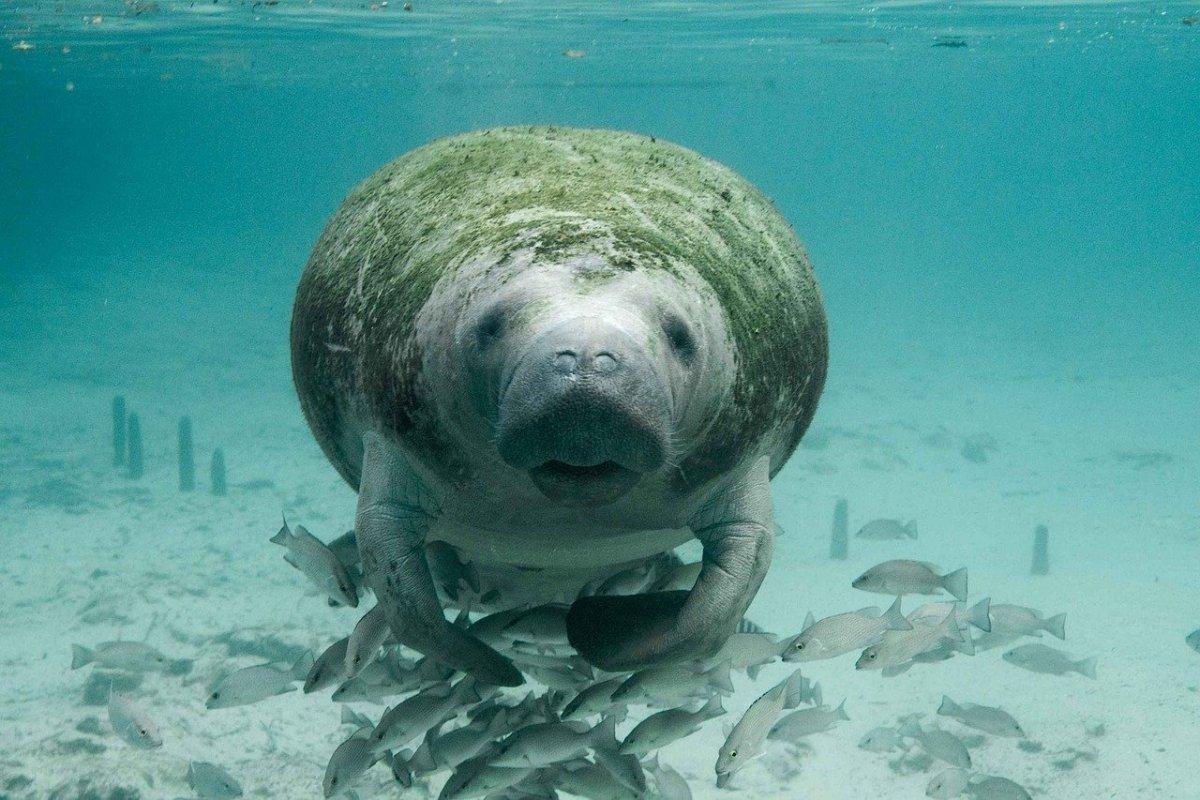
- Name: Amazonian manatee
- Scientific name: Trichechus inunguis
- Conservation status:
The Amazonian manatee is a species of manatee native to the Amazon Basin, in Peru, Brazil, Colombia, and Ecuador. It lives in the freshwater streams of the continent and has fine hairs all over its body. It is the smallest of all 3 species of manatees.
This manatee has been protected under Peruvian law since 1973, but its continuous decline is due to hunting, mainly in northeastern Peru.
6. Linnaeus’s two-toed sloth
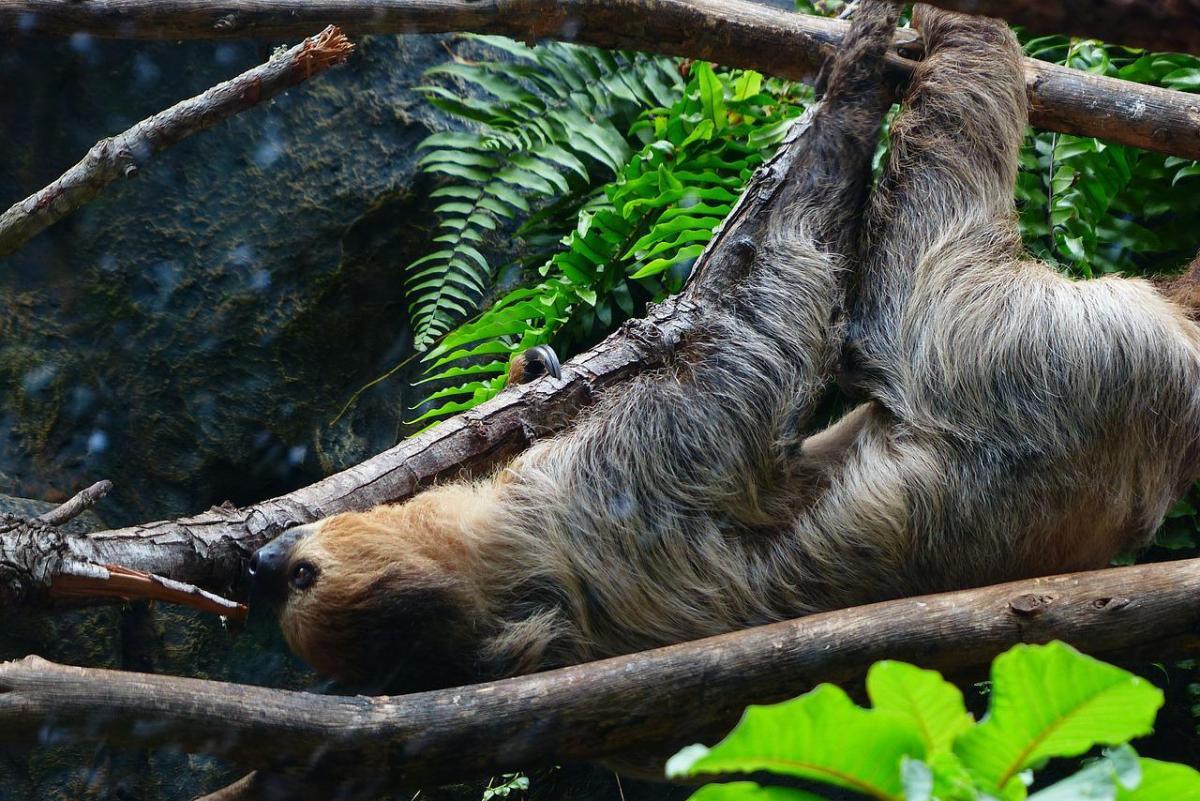
- Name: Linnaeus’s two-toed sloth
- Scientific name: Choloepus didactylus
- Conservation status:
Linnaeus’s two-toed sloth, also known as Linne’s two-toed sloth or the southern two-toed sloth, is a species of sloth native to South Americas. Outside of Peru, it can also be found in Brazil, Ecuador, Venezuela, Colombia, and the Guyanas.
This sloth is arboreal, solitary, and nocturnal, and it inhabits the rainforests of Peru. It is hunted by ocelots, jaguars and harpy and crested eagles, as well as anacondas.
7. Green anaconda
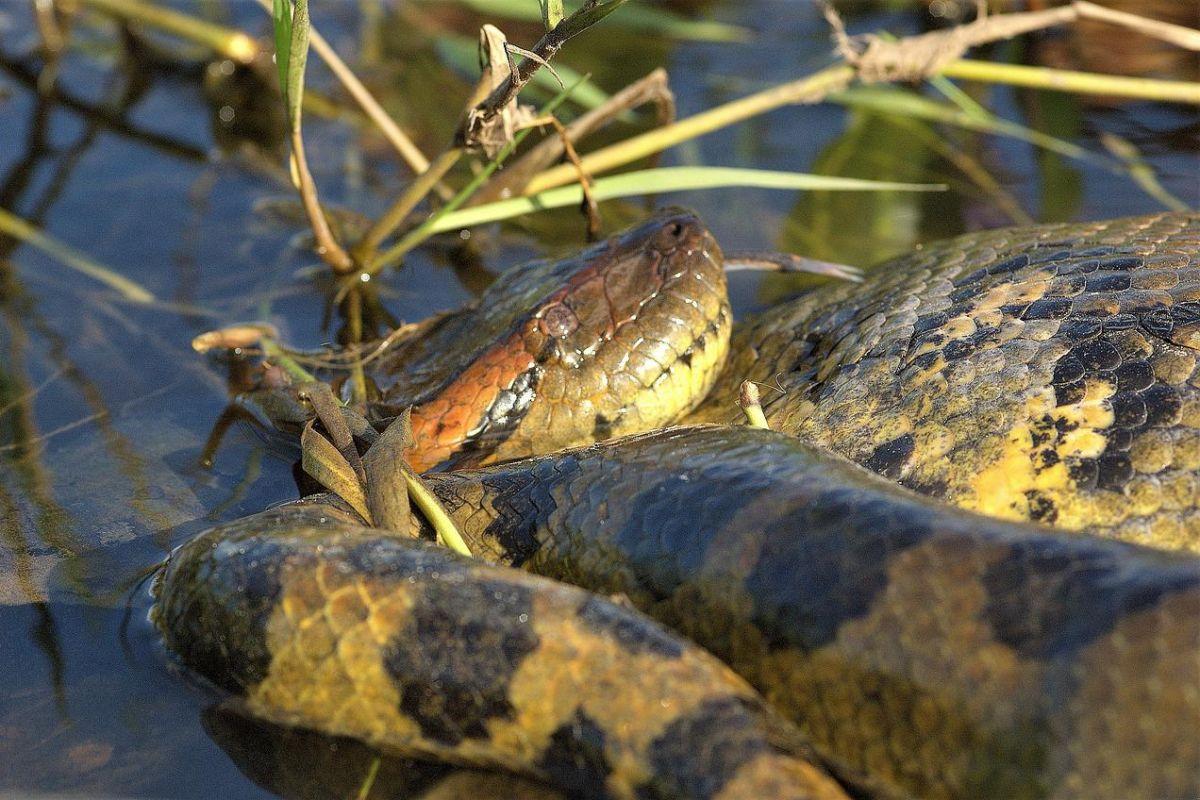
- Name: Green anaconda
- Scientific name: Eunectes murinus
- Conservation status:
The green anaconda, also known as the giant anaconda, the sucuri, the common water boa, or the giant anaconda, is the heaviest and one of the longest species of snake in the world, reaching lengths of up to 5.21 m / 17 ft 1 in long.
It can be found in the northern half of South America and lives in swamps, slow-moving streams, and marshes, primarily in tropical rainforests.
8. Andean mountain cat
- Name: Andean mountain cat
- Scientific name: Leopardus jacobita
- Conservation status:
The Andean mountain cat is a small species of wild cat native to the high areas of the Andes. It is considered endangered because only fewer than 1,500 individuals remain in the wild.
This wild cat is considered sacred by several indigenous peoples of Peru. In the country, it is completely illegal to hunt, trade, or own an Andean mountain cat, living or dead, and the animal lives in 4 out of the 12 protected areas.
9. Jaguar

- Name: Jaguar
- Scientific name: Panthera onca
- Conservation status:
From one of the smallest species of wild cat to the largest: the jaguar is the largest cat native to the Americas, and the third-largest felid in the world. Its bite is particularly powerful, and it can easily pierce through the shells of tortoises and turtles.
The jaguar has long been venerated in Peru and was often depicted in Aztec culture: considered a sacred animal, it is a representative of the ruler and the warrior.
10. Spectacled bear
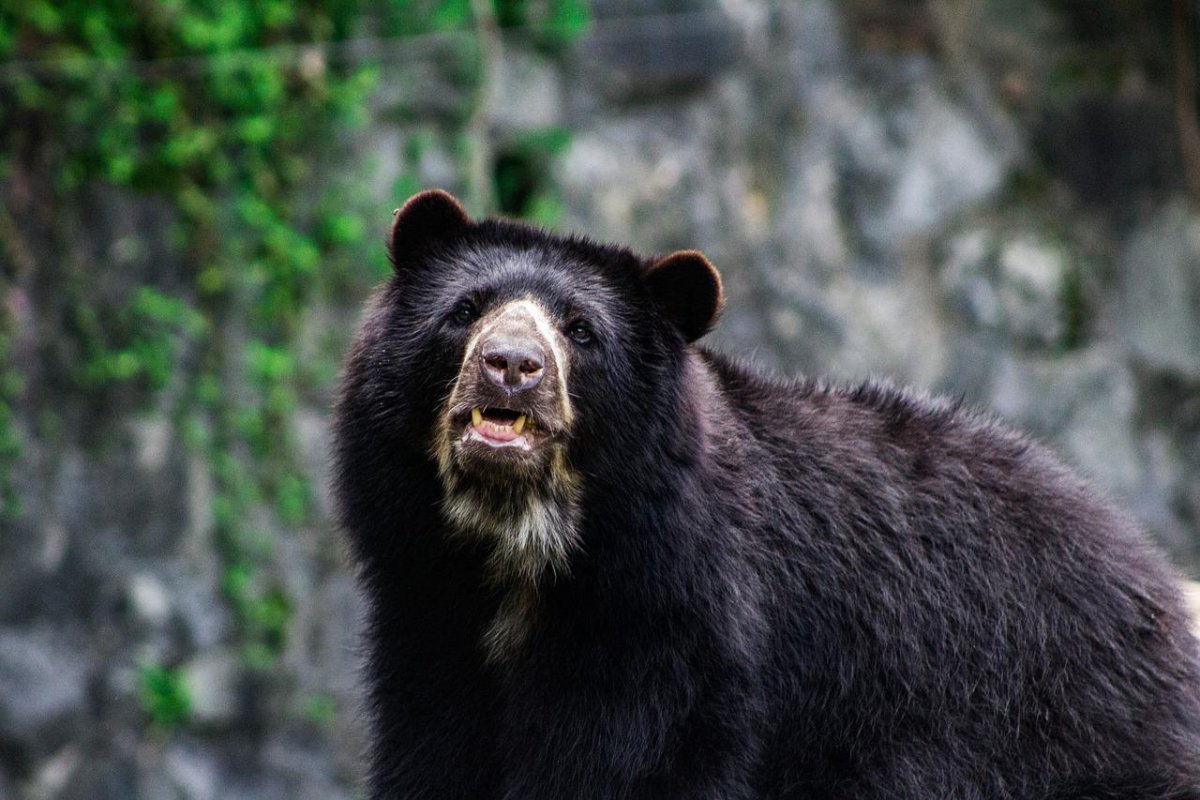
- Name: Spectacled bear
- Scientific name: Tremarctos ornatus
- Conservation status:
The spectacled bear, also known as the Andean bear, the Andean short-faced bear, or the mountain bear, is the only surviving species of bear native to South America. However, because of habitat loss, it is considered vulnerable to extinction.
In Peru, it particularly likes the desert areas, where it stays under vegetative cover during the day. At night, it emerges and almost exclusively feeds on plant matter such as palm nuts, fallen fruit and orchid bulbs.
11. Mountain tapir
- Name: Mountain tapir
- Scientific name: Tapirus pinchaque
- Conservation status:
The mountain tapir, also known as the wooly tapir or the Andean tapir, is the smallest species of tapir in the world. It is also the only one living outside of tropical rainforests, and it can be found in northwestern Peru, as well as Ecuador and Colombia.
This tapir lives in the National Sanctuary Tabaconas Namballe protected area in Peru, and it is seriously endangered because of its need for continuous areas of cloud forest and not isolated patches.
12. Southern tamandua
- Name: Southern tamandua
- Scientific name: Tamandua tetradactyla
- Conservation status:
The southern tamandua, also known as the lesser anteater or the collared anteater, is a species of anteater native to South America. It is solitary and lives in several habitats such as arid savannas and highly disturbed secondary forests.
This anteater lives at elevations of up to 1,600 m / 5,200 ft, usually next to rivers and streams. It feeds on ants, but also bees and termites, and has very strong foreclaws to break insect nests.
13. Monk saki
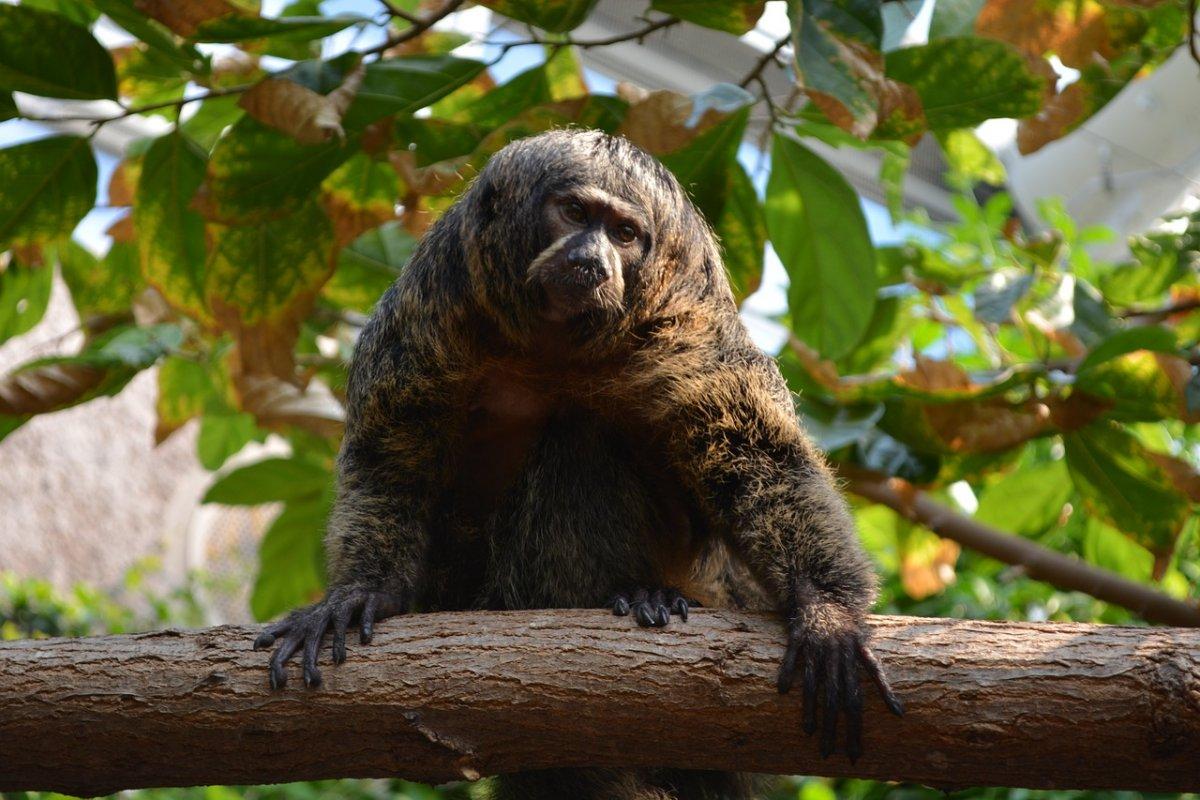
- Name: Monk saki
- Scientific name: Pithecia monachus
- Conservation status:
The monk saki, also known as Geoffroy’s monk saki, is a species of New World monkey native to South America. It can only be found in forested areas of northwestern Brazil, northeastern Peru and eastern Ecuador.
This monkey has a thick, bushy tail and coarse fur. It is very shy and wary, as well as totally arboreal, which is why it is particularly difficult to observe. It lives in pairs or small family groups and jumps from tree branch to tree branch.
14. Blue whale
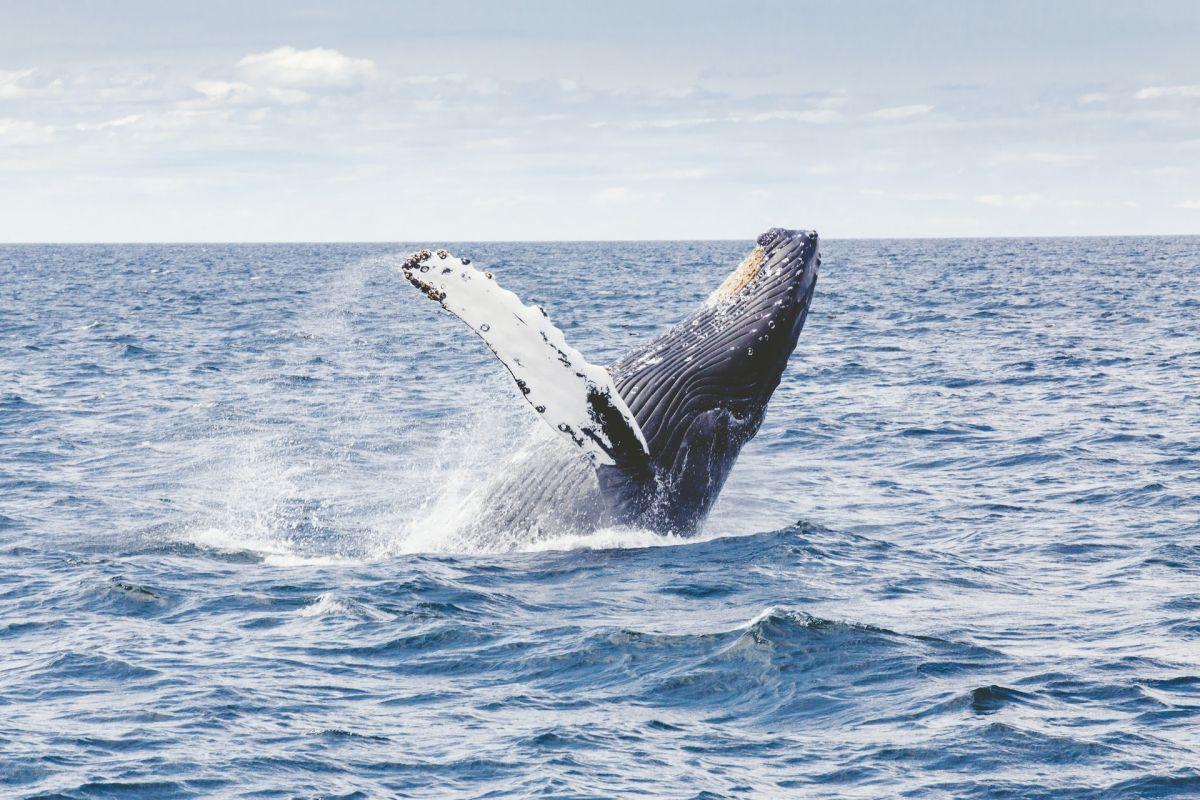
- Name: Blue whale
- Scientific name: Balaenoptera musculus
- Conservation status:
The blue whale is the largest animal to have ever existed, reaching outstanding lengths of up to 29.9 m / 98 ft and weights of up to 199 tons / 196 short tons.
Although it is sometimes sighted off the coast of Peru, it inhabits all oceans around the world and migrates thousands of miles between its breeding and feeding waters, every year. It is sadly seriously endangered by pollution, climate change, ship strikes and ocean noise.
15. Mantled howler
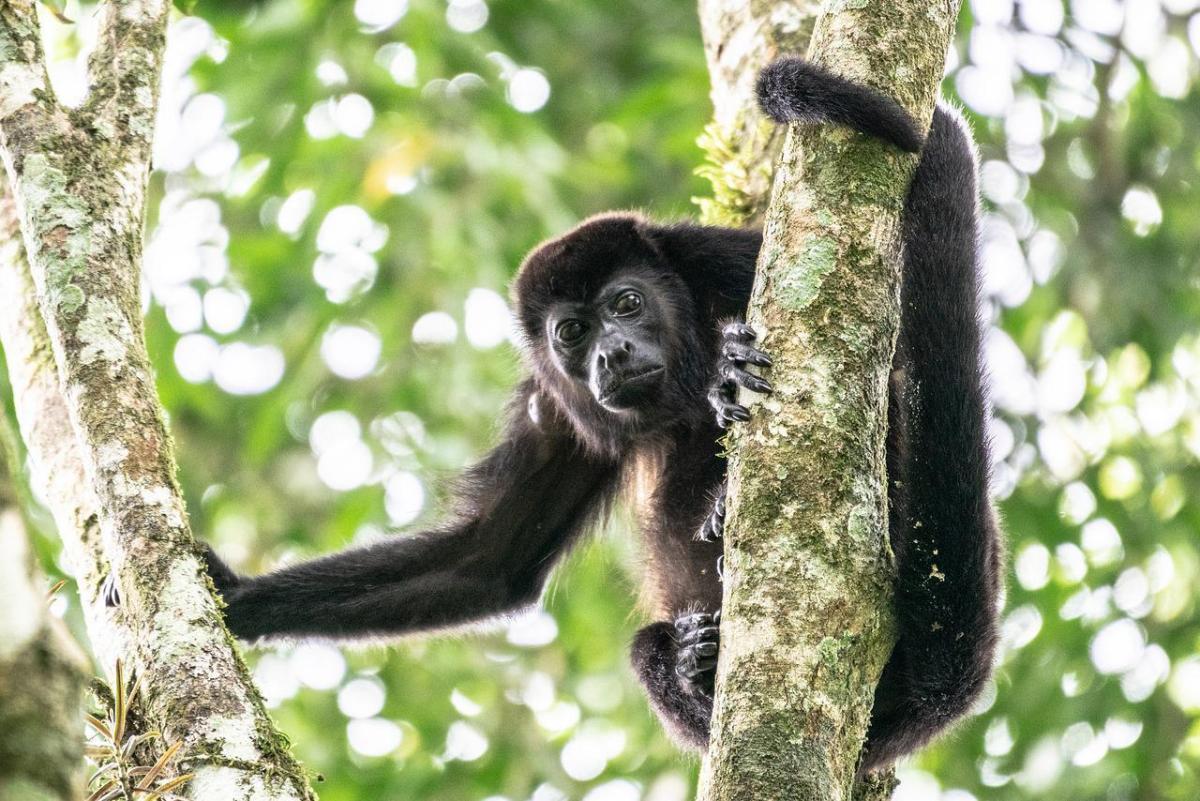
- Name: Mantled howler
- Scientific name: Alouatta palliata
- Conservation status:
The mantled howler is a species of howler monkey, which is particularly known for its very loud calls that can be heard from miles away. Despite being listed as vulnerable to extinction, it is one of the more common species of monkey in South America. Its main threats are habitat fragmentation and capture for the pet trade.
This primate is one of the largest species of Central American monkeys, and it feeds on large quantities of leaves.
16. Osprey
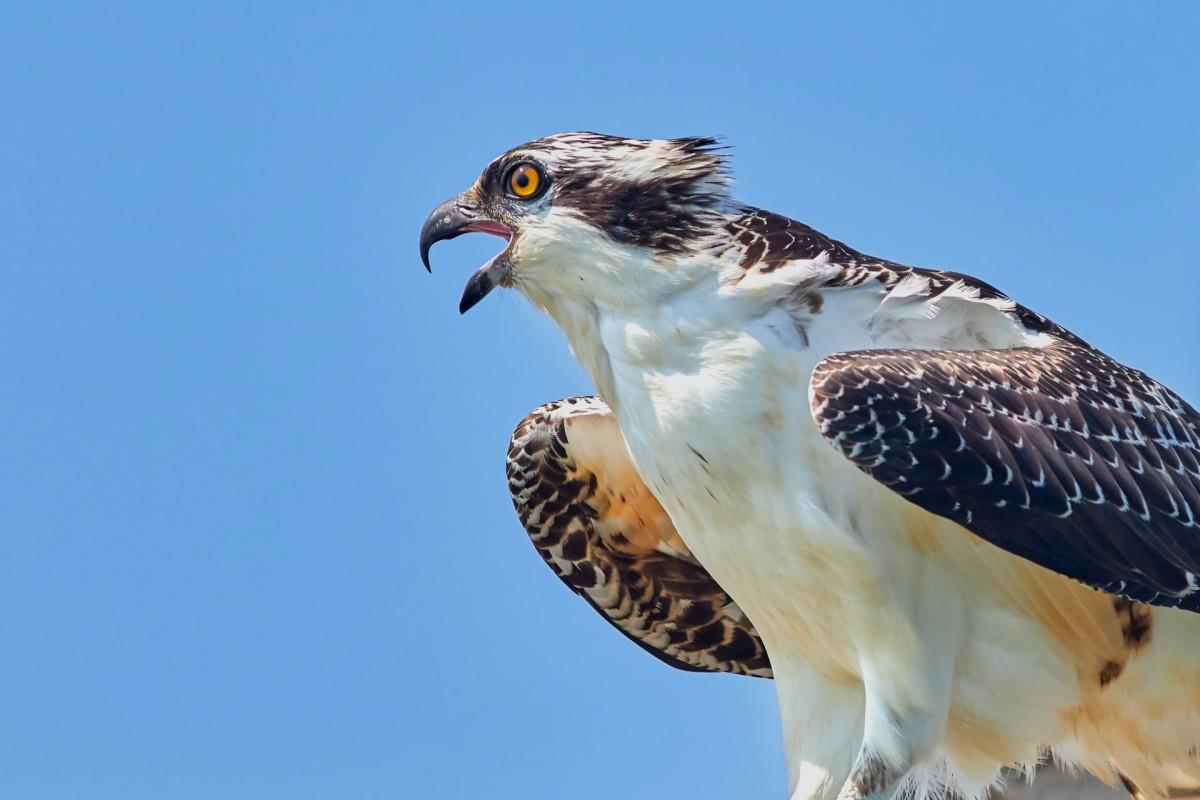
- Name: Osprey
- Scientific name: Pandion haliaetus
- Conservation status:
The osprey, also known as the fish hawk, the river hawk, or the sea hawk, is a medium-sized species of bird of prey with a worldwide distribution. It can be found on the coast of Peru, and lives in a wide variety of habitats, as long as there is a neighboring body of water.
As its name implies, it almost exclusively feeds on fish and is specialized in hunting it.
17. Burmeister’s porpoise
- Name: Burmeister’s porpoise
- Scientific name: Phocoena spinipinnis
- Conservation status:
Burmeister’s porpoise is a species of porpoise endemic to the western, eastern, and southern coastline of South America. It is locally known as the sea pig or the thorny porpoise, and although fairly common within its range, not much is known about this animal.
This porpoise lives in the waters of northern Peru, usually in bays, fjords, and channels. Despite primarily living in shallow waters, it was already seen at depths of 1,000 m / 3,300 ft below sea level!
18. South American sea lion

- Name: South American sea lion
- Scientific name: Otaria flavescens
- Conservation status:
The South American sea lion, also known as the Patagonian sea lion or the southern sea lion, is a species of sea lion found on the coasts of western and southern South America. While males are considerably bulky and have a large head and a prominent mane, females are much, much smaller.
This sea lion lives in large territories and harems and feeds on fish and cephalopods. Its population is stable, and there are about 265,000 individuals left in the wild.
19. Kinkajou
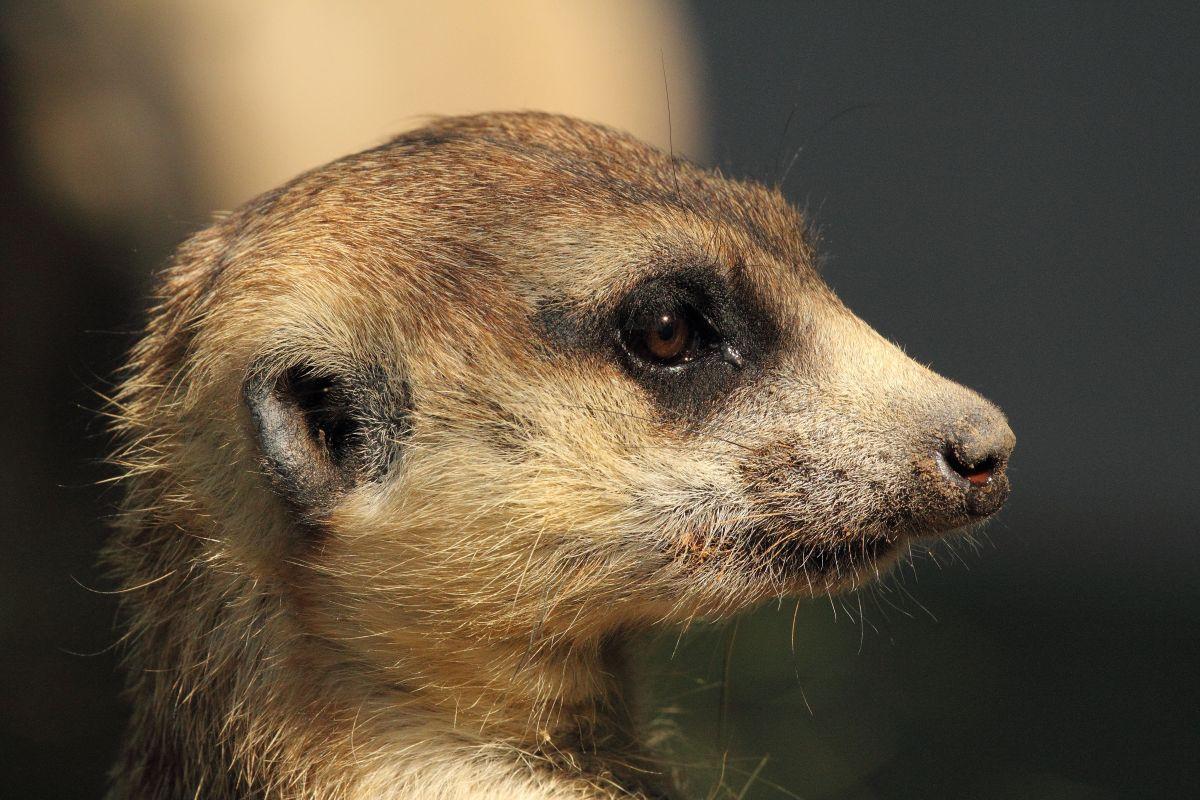
- Name: Kinkajou
- Scientific name: Potos flavus
- Conservation status:
The kinkajou is a species of mammal native to the tropical rainforests of Central and South America. It is mostly frugivorous and is not endangered, but is still hunted for the illegal pet trade, as well as its meat and skin. Although usually solitary, it was already seen in groups of several individuals.
Captive kinkajous are known as lion monkeys in Peru, which come from their monkey-like body and lion-like head.
20. Tayra
- Name: Tayra
- Scientific name: Eira barbara
- Conservation status:
The tayra is a species of weasel native to Central and South America. It is omnivorous, and has a long, slender body, looking very similar to large martens and weasels.
This animal can be found in the eastern parts of Peru, and generally lives in subtropical and tropical forests, as well as cultivated plantations, croplands, and grasslands. It is active by day and is an expert climber that feeds on small mammals, rodents, birds, lizards, and fruit.
21. South American fur seal
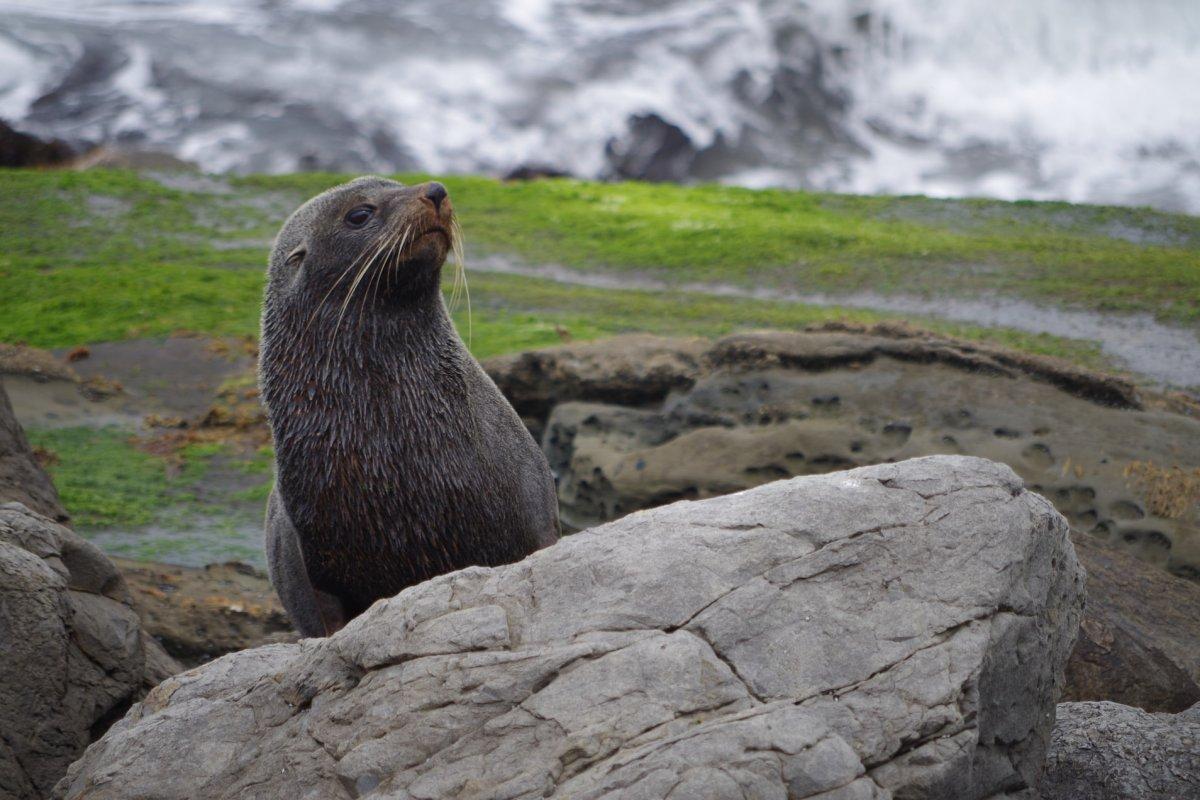
- Name: South American fur seal
- Scientific name: Arctocephalus australis
- Conservation status:
The South American fur seal is a species of seal found on the coasts of Peru, Argentina, Chile, the Falkland Islands, and Brazil. The trend of the global population of the South American fur seal is not well understood because of inconsistent census methods and little data.
This seal lives on the southwestern coast of Peru, as well as in sea caves. Sometimes, it climbs up to 15 m / 49 ft to find a spot to rest.
22. Andean pygmy owl
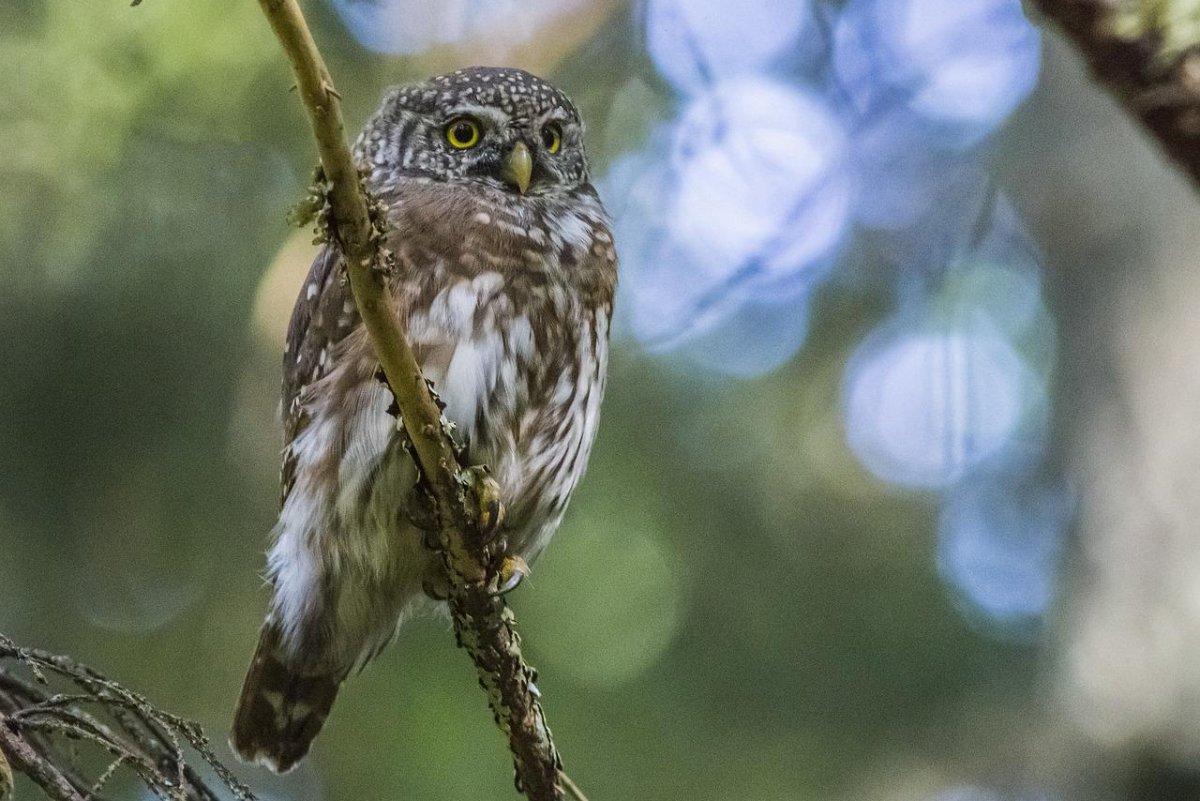
- Name: Andean pygmy owl
- Scientific name: Glaucidium jardinii
- Conservation status:
The Andean pygmy-owl is a species of owl native to small areas of Peru, Colombia, Ecuador, and Venezuela. As its name suggests, it is very small, reaching lengths of up to 16 cm / 6.3 in, and it feeds on invertebrates, smaller birds and small mammals, both during the day and the night.
This owl is fairly common within its range, which is pretty scattered and small but is still considered of least concern.
23. Risso’s dolphin
- Name: Risso’s dolphin
- Scientific name: Grampus griseus
- Conservation status:
Risso’s dolphin is a species of dolphin native to almost every coastline of the world, except for western Africa. It lives in temperate, subtropical, and tropical waters, and usually lives at depths between 400 and 1,000 m / 1,300 and 3,300 ft, with water temperatures of about 15 °C / 59 °F.
This dolphin mainly feeds on cephalopods and fish that it finds using echolocation. Its teeth are not used for hunting, but only as display weapons during mating conflicts.
24. Crab-eating raccoon
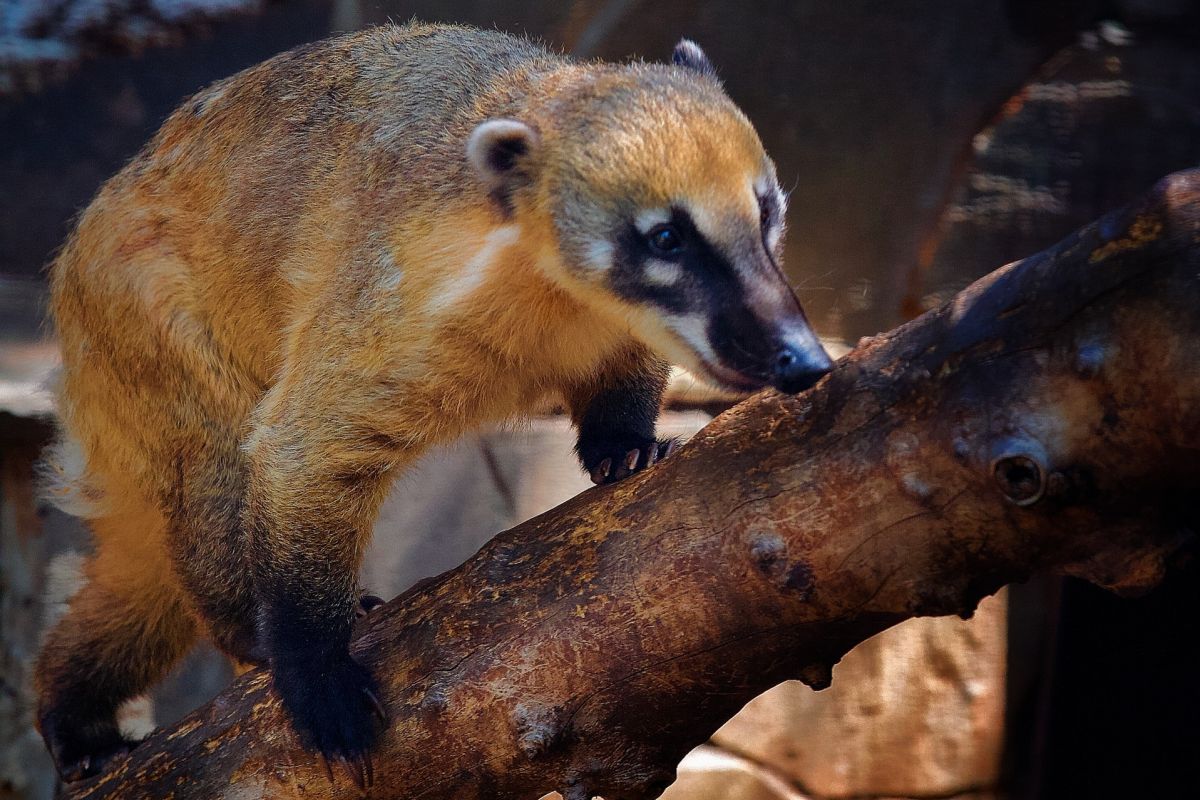
- Name: Crab-eating raccoon
- Scientific name: Procyon cancrivorus
- Conservation status:
The crab-eating raccoon, also known as the South American raccoon, is a species of raccoon native to Central and South America. It inhabits the marshy and jungle areas of eastern Peru and does not exclusively feed on crab, despite its name: oysters, crayfish, clams, and lobster are also part of its diet.
This raccoon is both solitary and nocturnal, and it spends a significant amount of its time in trees, although mainly terrestrial.
—
So there you have them, these were my 24 Peru native animals. I hope you enjoyed this list and that you learned something new today.
In case you want to learn more about animals in the country, feel free to keep reading, as I still have lots of things to tell you about:
Endangered Animals of Peru
This is definitely the saddest part of the list, but it is very important to raise awareness. Because of this, let’s go through the list of endangered animals in Peru.
Here are the animals in danger of extinction in Peru.
- Lagostomus crassus
- San Martin titi monkey
- Carabaya stubfoot toad
- Royal cinclodes
- Bolivian stubfoot toad
- Chilean woodstar
- and 51 more…
- Giant otter
- Andean cat
- Summers’ poison frog
- Pacific nurse shark
- Andean night monkey
- and 150 more…
To see the full list of endangered species in Peru, head over to the International Union for Conservation of Nature’s Red List.
What is the National Animal of Peru?
The national animal of Peru is the vicuña.
The most famous Peruvian animal is of course its national emblem. The vicuña, sometimes spelled vicuna, is a species of camelid native to the high alpine areas of the Andes mountain range.
It is present on the Peruvian coat of arms and was highly prized by the Inca for its wool. The vicuña is used in fertility rites by local people and is mainly wild but you can sometimes ride one.
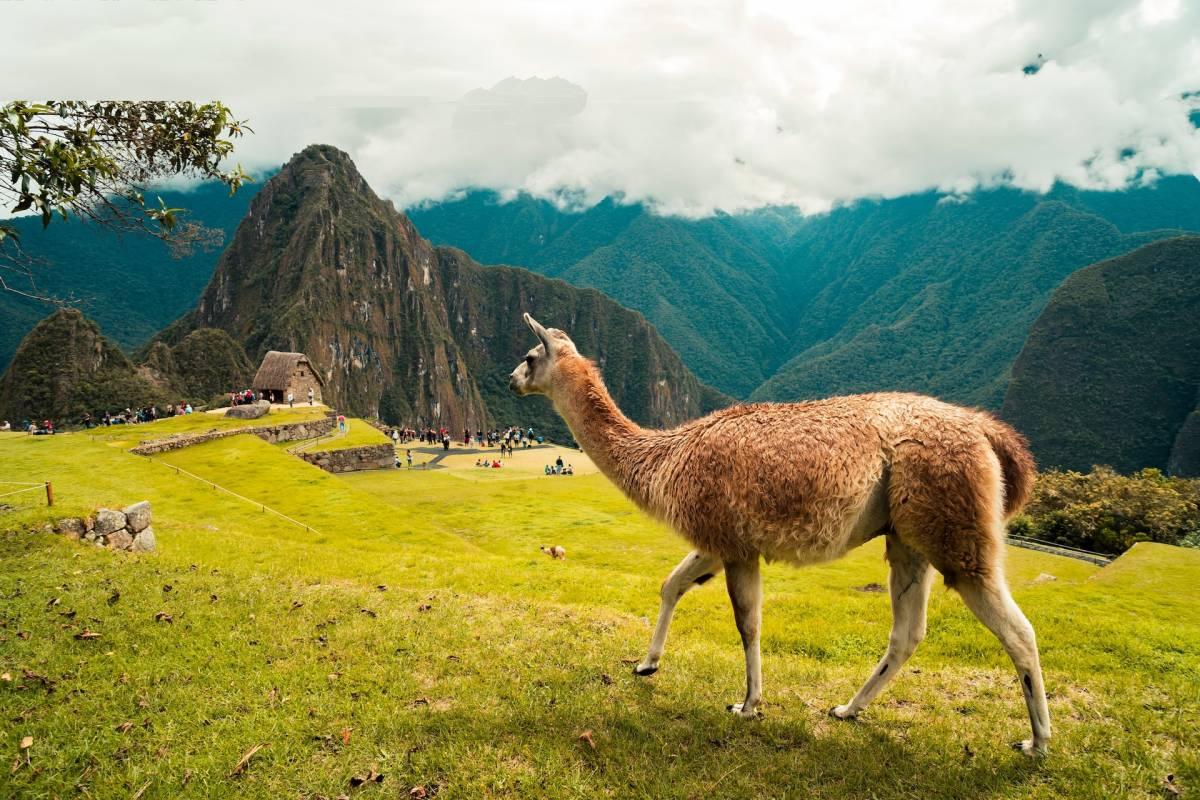
How Many Animals Native to Peru?
What is the diversity of native animals in Peru?
Let’s look at the total number of species of Chordata (mammals, birds, fishes, and reptiles).
Total number of animal species in Peru: 4,707 (14,422 in total in South America)
More About Animals in the World!
Loved these Peru wildlife facts? Want to see what animals live in other countries?
Then check out these posts:
Or click here to see ALL the facts up on the blog! Spoiler alert: there’s A LOT of them.
Share the knowledge! Click on the buttons below to share information about these native animals of Peru with your friends, and help them learn more about the world 🙂
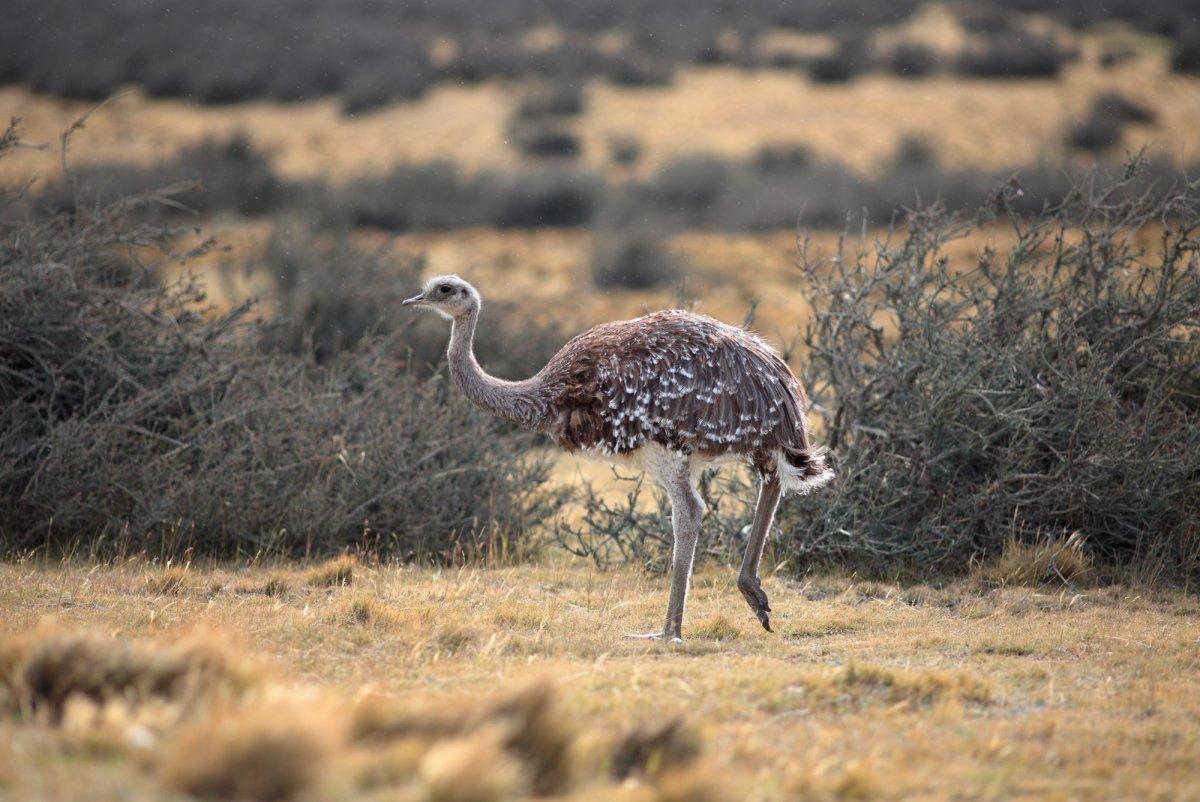
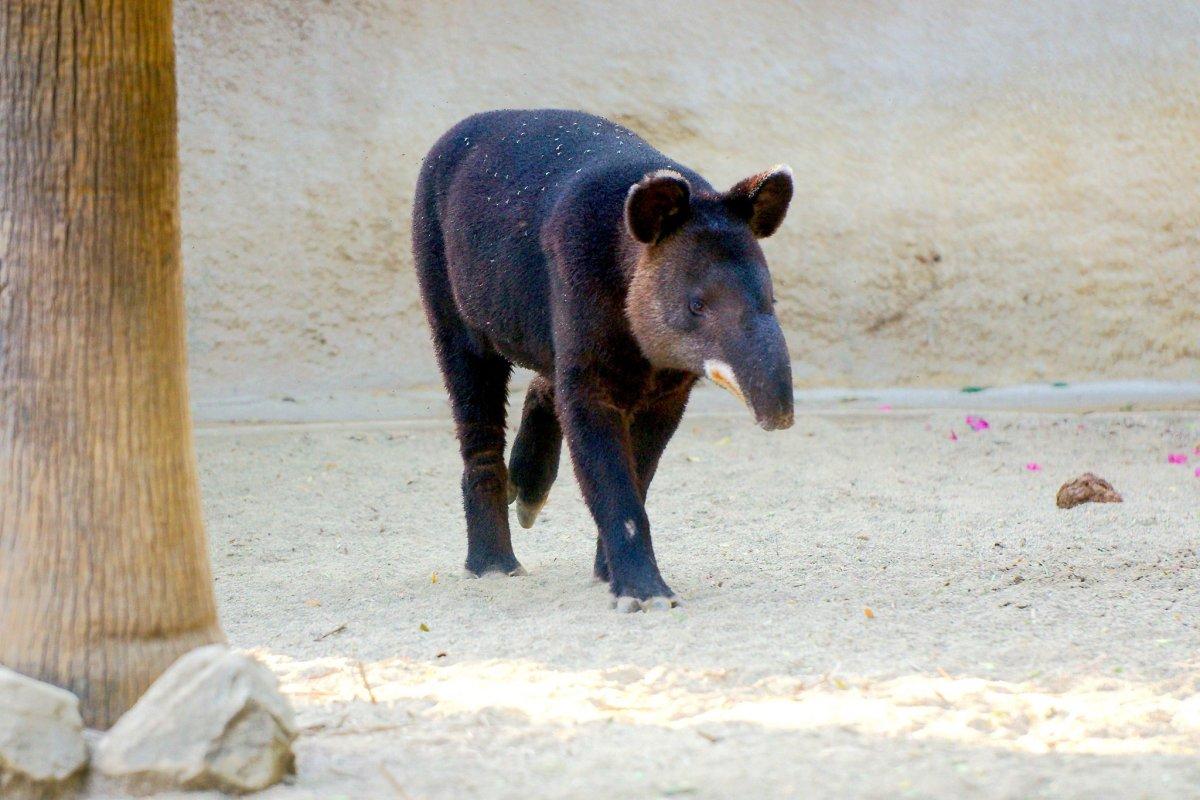
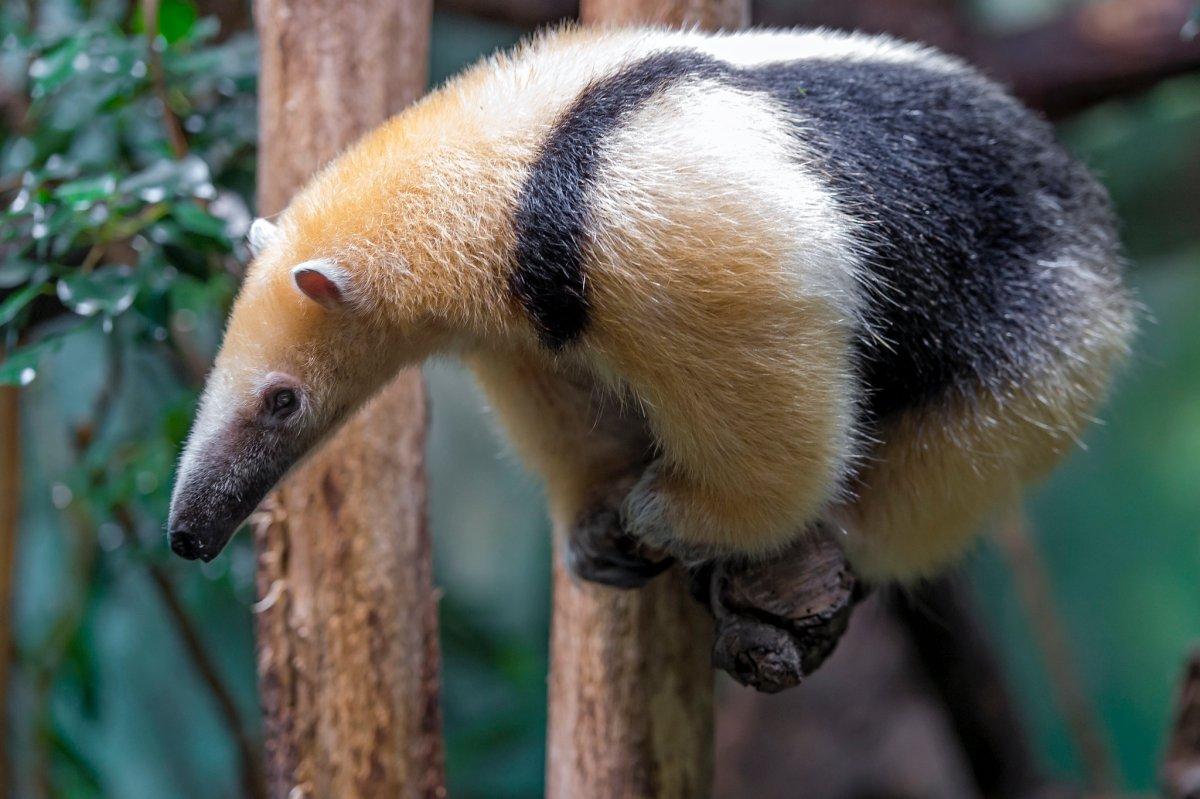
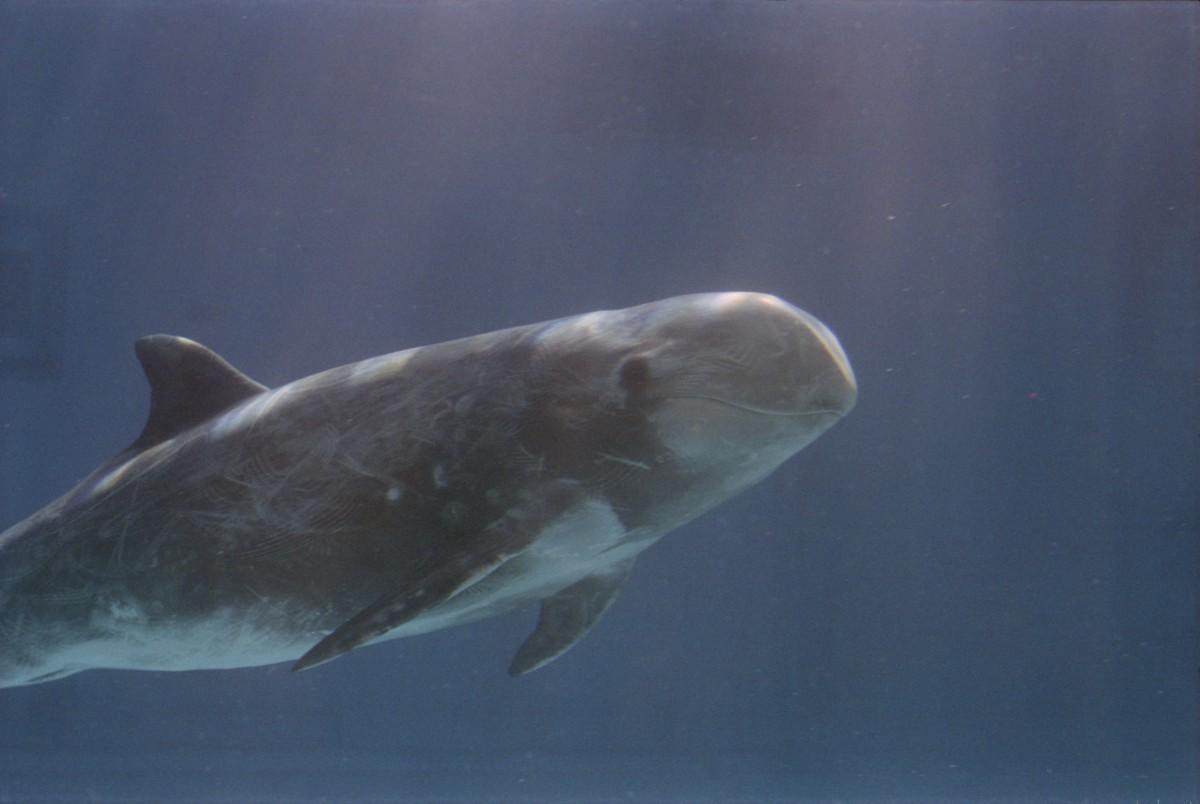
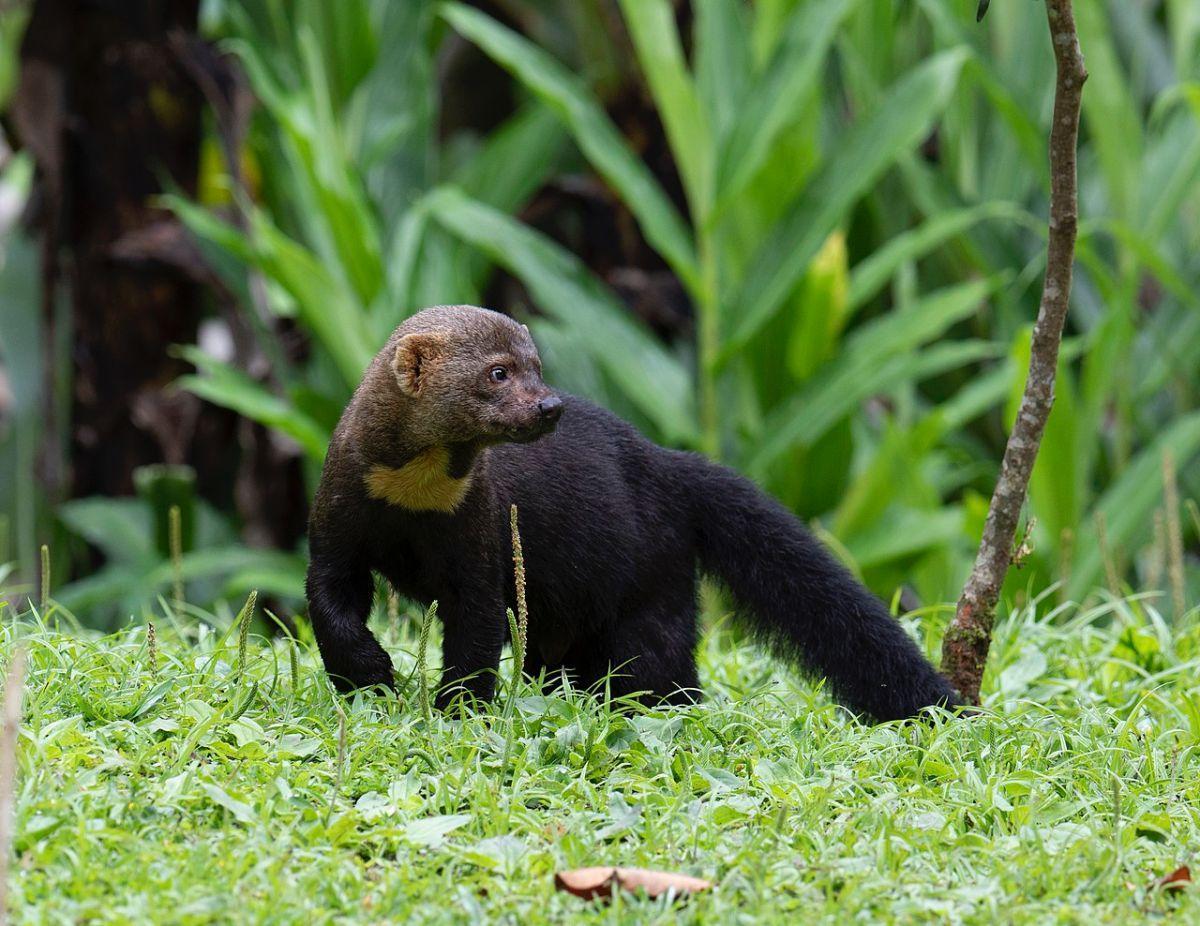
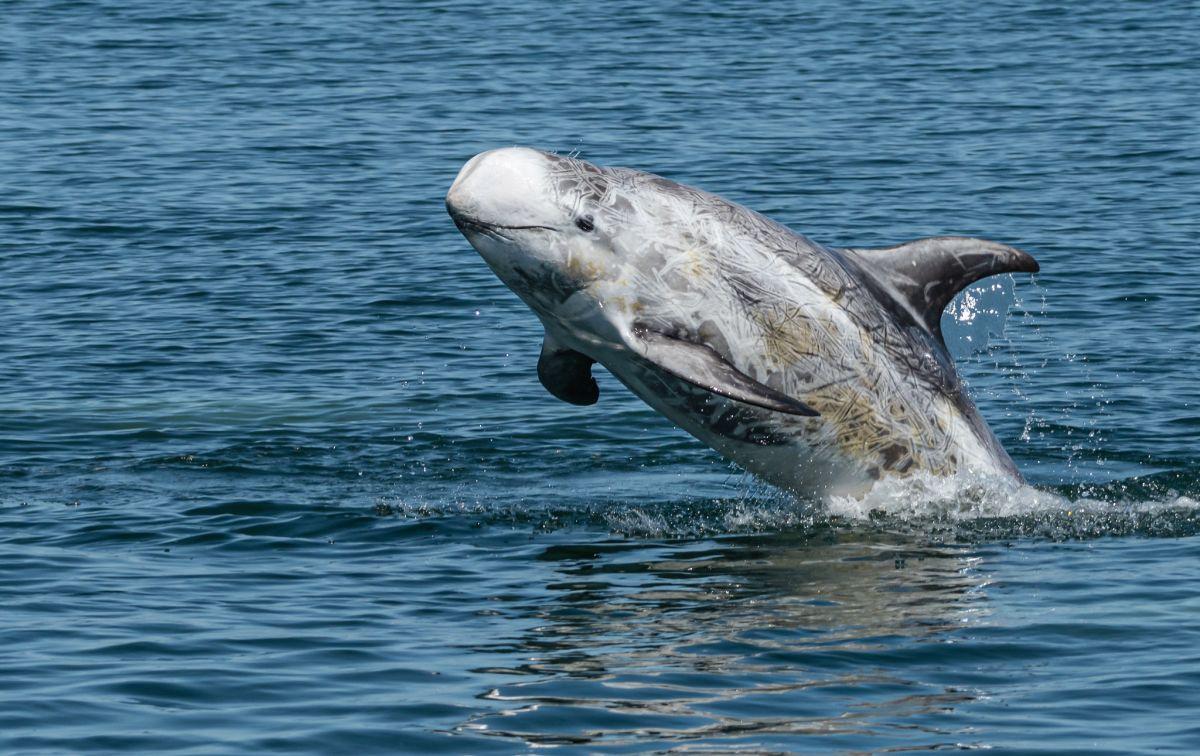

![25 Wild Animals in Scotland [Wildlife in Scotland]](https://www.kevmrc.com/wp-content/uploads/2022/10/25-wild-animals-in-scotland.jpg)
![13 Wild Animals in Seychelles [Wildlife in Seychelles]](https://www.kevmrc.com/wp-content/uploads/2022/12/13-wild-animals-in-seychelles.jpg)
![30 Wild Animals in Russia [Wildlife in Russia]](https://www.kevmrc.com/wp-content/uploads/2022/10/30-wild-animals-in-russia.jpg)